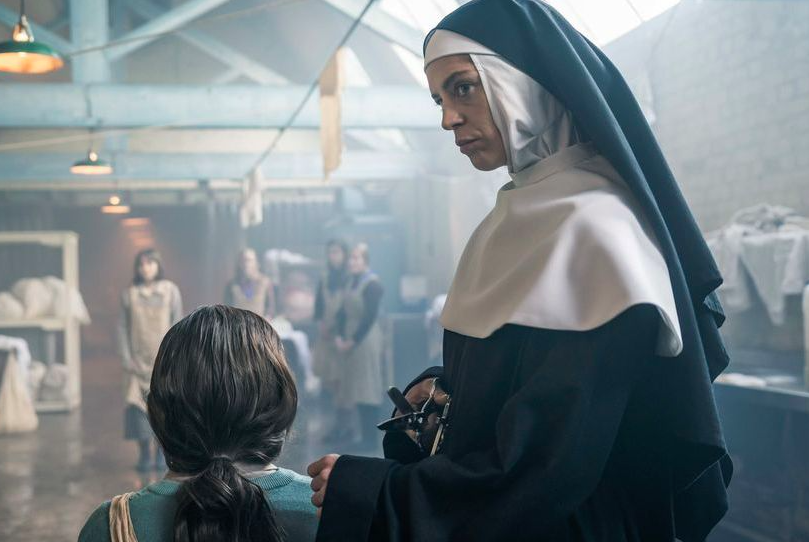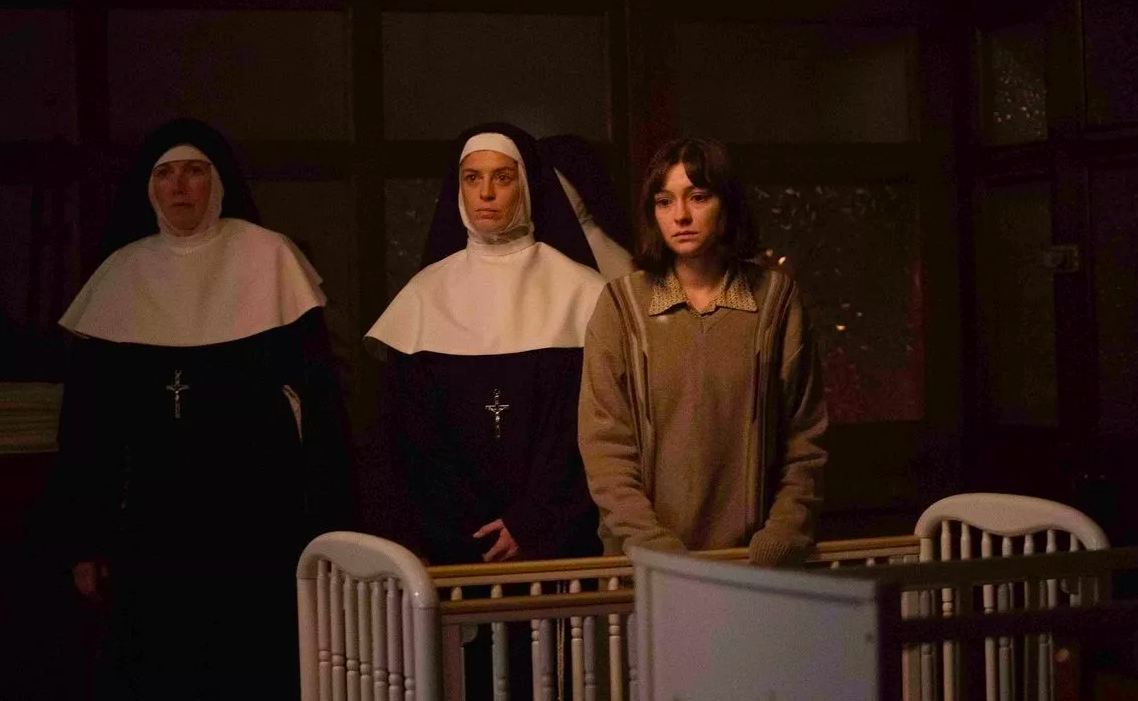Showtime’s ‘The Woman in the Wall’ follows the story of Lorna Brady, whose life goes completely haywire when she discovers a dead body in her house after passing out at a pub the previous night. While she tries to figure out whether she killed the person, a police detective arrives in town, looking into the case of a priest who was murdered in Dublin. Both the murders converge in the town of Kilkinure, a place that Lorna calls home and the place where she has also suffered a tragic fate. Where is this town, and what’s the story behind the Kilkunure Convent?
The Kilkinure Town and Convent are Fictional But Have Roots in Reality
Kilkinure is a fictional Irish town that serves as the setting for ‘The Woman in the Wall,’ created by Joe Murtagh. The show is inspired by the real-life Magdalene Laundries, with the Kilkinure Convent being one of them in the show. While the Laundries existed in real life, Kilkinure is entirely fictional.

Despite using the real events as the backdrop of the story, Murtagh intentionally gave the story a fictional setting and characters. By setting the show in a real Irish town, the creator of the show didn’t want to limit the story of the victims of the Magdalene Laundries to that town. His intention was “to collate as many of these stories” and present characters that represented varied experiences of the women who have been through this travesty. The fictional setting also allowed him to expand the plot and work in the murder mystery angle.
While Kilkinure Convent might not be real, it is modeled on the real Magdalene Laundries. Named after Mary Magdalene, these institutions were said to have been state-sponsored and were run by the religious authorities that took in “fallen women” in the name of rehabilitating them. Initially, it started as a way to reform sex workers and mothers out of wedlock, but the criteria for what was considered a bad apple soon expanded to women with mental health issues as well as the ones who had suffered abuse but were not believed. Often, young girls would be forced by their families to be sent to such places because they thought the girls were better off there.
What happened in such places was nothing short of physical, sexual, and mental abuse. Women were forced to do physical labor but were not paid anything at all. For many women, once they were admitted in, they were never let out. Some spent their entire lives within the walls of such places, without any contact with the outside world. It was a prison that never came with an expiration date on their imprisonment. The women who gave birth here had their babies taken away from them. The last such place in Ireland was closed down in 1996.

Singer, songwriter, and activist Sinead O’Connor revealed that she, too, had spent eighteen months of her life in a Magdalene Laundry. She revealed that she was sent to the Sisters of Our Lady Charity laundry in Dublin when she was 14 because she was considered a “problem child.” She revealed that most women there were mere girls who were completely cut off from the outside world and their families, and a lot of them were already victims of abuse and thrown into another highly abusive environment. According to O’Connor, one girl was sent there simply because “she had a bad hip and her family didn’t know what to do with her.”
O’Connor was one of an estimated 30,000 women who suffered abuse in the Magdalene Laundries in Ireland. (Such places also existed in the UK, the US, Canada, Sweden and Australia.) The truth about the extent of horrors in these places came into wide public view when 155 unmarked graves of women were discovered in 1993 by a property developer who had bought the land that was previously a Laundry in Dublin. In 2014, a mass grave of 796 children, ranging from two days to nine years in age, was found in a sewage tank in Tuam, County Galway. The fact that the last such place was closed down barely three decades ago shows how dire the situation had been for such a long time. The fictional Kilkinure Convent in ‘The Woman in the Wall’ presents only a fraction of those horrors suffered by thousands of women.
Read More: Is Lorna Brady Based on a Real Person?


You must be logged in to post a comment.